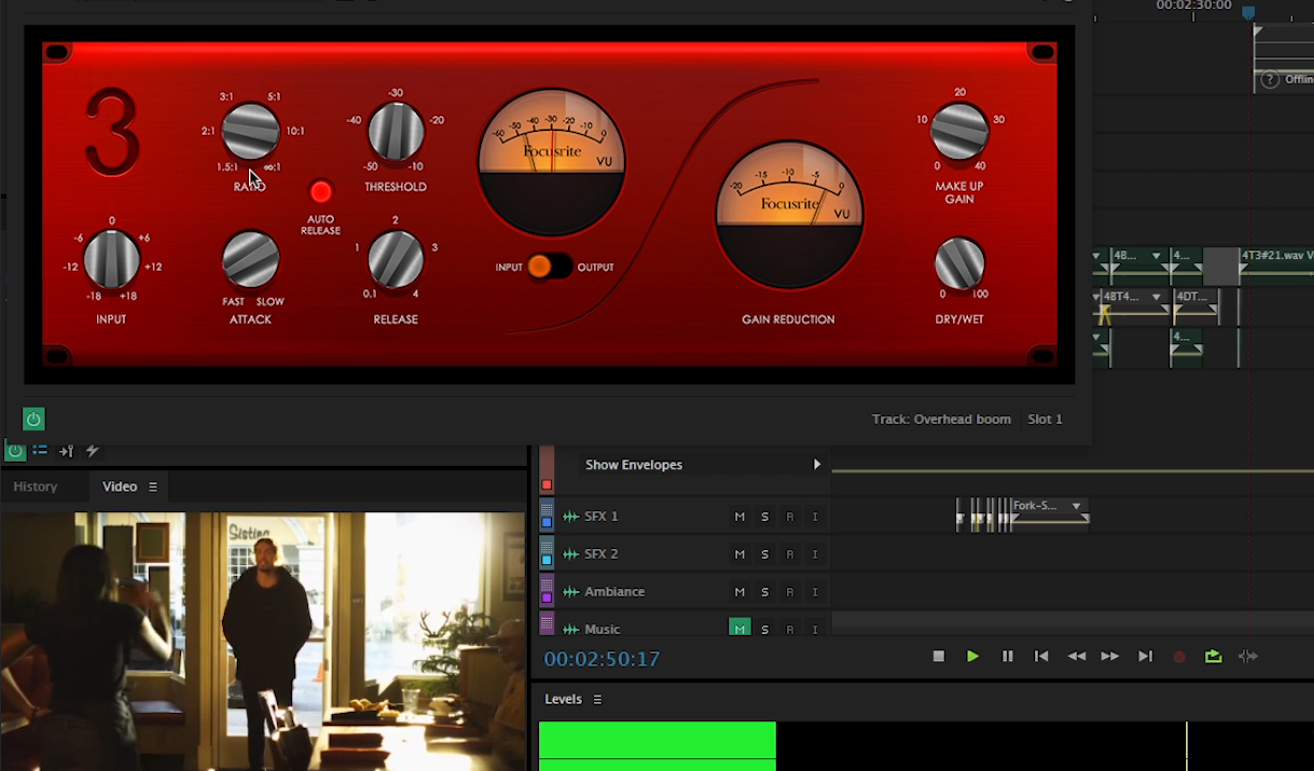
Compression in itself is a very simple concept: when sounds get too loud the compressor kicks in, reducing the level of the signal. Somewhat counterintuitively, the effect is to make everything sound louder. Why? Because once you’ve removed those intense volume peaks, the entire audio signal can be boosted to a higher level without risk of clipping.
Why is a compressor so important for film and television work? The most obvious application is voiceover, where compression gives that “radio voice” sound. But equally important is the role compression plays in dialog. In theatrical release you can expect a quiet theater, so the whispers of an actor can be easily comprehended by the theater goers. That’s not the case for TV: loud family rooms make it impossible to hear those same lines. Throw some compression on the dialog track though and now an actor’s whisper and her shout are both intelligible.
There are three main components to a compressor: the threshold, the ratio, and the release. The threshold determines how loud a sound needs to get before its volume is reduced. The ratio sets the size of the volume reduction, and the release determines how long the compression remains “on” after being triggered. This last control is subtle, but important. Too short a release time produces an unnatural “pumping” effect.
